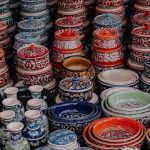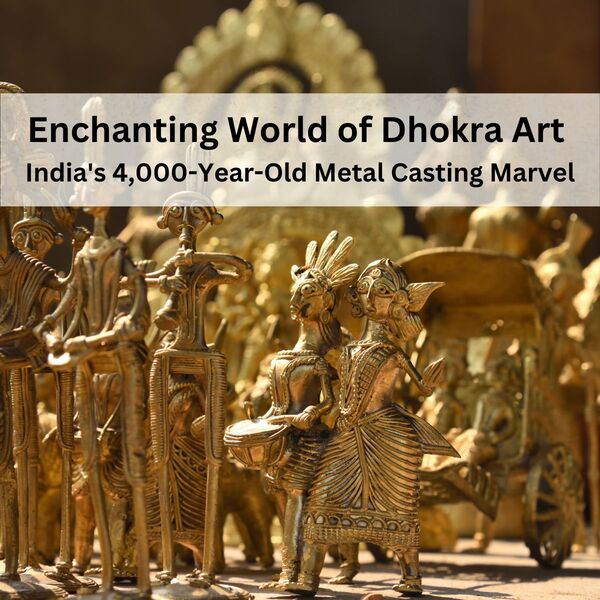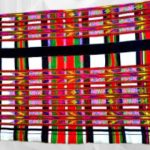
चुनार की ग्लेज़ पॉटरी लाल मिट्टी से बनती है। यह परंपरा मौर्य काल से (321 ईसा पूर्व से 185 ईसा पूर्व तक) चली आ रही है। इस समय के दौरान चुनार शहर मिट्टी के बर्तनों बनाने का एक महत्वपूर्ण केंद्र था।
India’s 4,000-Year-Old Metal Casting Marvel


Dhokra art, a mesmerizing dance between fire and metal, boasts a legacy that stretches back over 4,000 years. This ancient Indian art form, practiced by the indigenous communities of Chhattisgarh and Odisha, breathes life into exquisite metal sculptures using the lost-wax casting technique. Each Dhokra piece, imbued with the essence of tradition, narrates a captivating story of cultural heritage and artistic brilliance
Dhokra Art: A Glimpse into the Mesmerizing Technique
The meticulous process of Dhokra art is as captivating as the finished product itself. Here’s a glimpse into the magic behind this timeless art form:
Dhokra Art: More Than Just Exquisite Sculptures
Dhokra art transcends the realm of mere aesthetics. It serves as a repository of India’s cultural heritage, passed down through generations. Each Dhokra piece embodies the beliefs, traditions, and artistic sensibilities of the indigenous communities that practice this art form.
The Encroaching Threat: The Need for Revival
In the face of mass-produced goods and a decline in younger artisans taking up the mantle, Dhokra art, like many other traditional art forms, faces the threat of extinction.
What Can We Do?
Supporting Dhokra art is not just about acquiring a beautiful sculpture; it’s about preserving a vital thread in the rich tapestry of Indian culture. Here’s how you can contribute:
By taking these steps, we can ensure that the legacy of Dhokra art continues to captivate future generations, serving as a testament to the enduring spirit of Indian craftsmanship.
Looking to Explore Dhokra Art Further?
Let’s join hands to celebrate the timeless beauty of Dhokra art and ensure its legacy continues to inspire for years to come.
Image credit:

चुनार की ग्लेज़ पॉटरी लाल मिट्टी से बनती है। यह परंपरा मौर्य काल से (321 ईसा पूर्व से 185 ईसा पूर्व तक) चली आ रही है। इस समय के दौरान चुनार शहर मिट्टी के बर्तनों बनाने का एक महत्वपूर्ण केंद्र था।

In the realm of art, India stands as a vibrant tapestry woven with culture, tradition, and boundless creativity. From the intricate brushstrokes of Raja Ravi Varma to the avant-garde visions of Tyeb Mehta, Indian artists have left an indelible mark on the global art landscape. However, it’s not merely the artistic brilliance that captivates attention; it’s the remarkable surge in bids witnessed at Indian art auctions that are garnering widespread acclaim and international headlines.

पुआँचेई की बुनाई में कौशलता और धैर्य की आवश्यकता होती है। पुआँचेई एक किस्म की शॉल है जिसे आमतौर पर कपास से बनाया जाता है, लेकिन हाल में सिंथेटिक यार्न का भी उपयोग होने लगा है। सूत की धागों को पौधों, फलों और फूलों से प्राप्त प्राकृतिक रंगों का उपयोग करके रंगा जाता है। पुआँचेई पारंपरिक रूप से करघे पर बुनी जाती है। बुनकर बुनने की प्रक्रिया के दौरान विभिन्न रंग के धागों का प्रयोग कर डिज़ाइन बनाते हैं ।